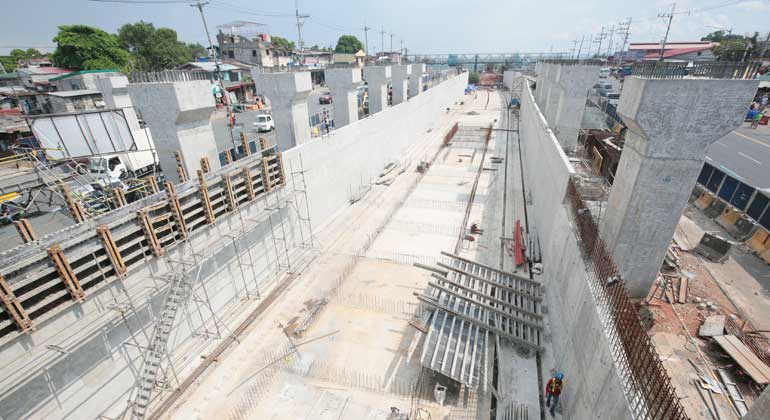
STATE SPENDING on infrastructure declined once again in July, due to the slow resumption of construction work and bad weather in some areas, the Department of Budget and Management (DBM) said.
Latest DBM data showed infrastructure and other capital outlays dropped 30.4% to P52.3 billion in July from P75.2 billion logged in the same month last year. This was also 16% lower than the P62.8 billion spent for infrastructure in June.
“Infrastructure and capital outlays were lower by P22.9 billion year on year ending up at P52.3 billion mainly on account of the one-off expenditure in July last year with the advance payment made by the DND for the projects under the Revised AFP Modernization Program (RAFPMP),” the Budget department said.
The DBM also noted the disbursements to the Department of Public Works and Highways (DPWH) were lower year on year, as projects were gradually restarted with health and safety protocols. It also said some areas experienced inclement weather, which also affected construction work.
Lockdown restrictions in Metro Manila and nearby provinces were eased since June, but health and safety protocols continue to be implemented to curb the spread of coronavirus disease 2019 (COVID-19).
Infrastructure expenditures were down 9.4% to P350.3 billion in the January to August period, largely due to the impact of the enhanced community quarantine (ECQ) on business activity in Metro Manila and nearby provinces. Construction activities were only allowed to resume in mid-May.
“Infrastructure spending was lower year on year due to the base effect of high infrastructure expenditures in the same period last year brought about by the payment of prior years’ accounts payables, and the temporary suspension of public works due to the implementation of the ECQ measure in Luzon and other areas nationwide starting mid-March up to late May,” the DBM said.
Overall spending of the government reached P2.388 trillion at the end of July, up 24% from a year ago.
Infrastructure spending is likely to pick up following the July slump after the DBM released P38.3 billion to the DPWH, the country’s biggest infrastructure-implementing agency, in August it said.
“Infrastructure spending has substantial multiplier effects on output, employment, and household income. Hence, a contraction in government spending on infrastructure can deprive the economy of potential boosters of economic recovery,” University of Asia and the Pacific (UA&P) School of Economics Senior Economist Cid L. Terosa said in an e-mail.
Economic managers said massive spending on infrastructure will help the economy recover faster as it creates more jobs.
However, this year’s budget for infrastructure projects was cut to P785.5 billion, or 4.2% of gross domestic product (GDP), from the initial program of P989 billion as the government redirected funds to fund the pandemic response.
Mr. Terosa noted the reduced infrastructure spending may hurt economic growth over the longer term.
“Infrastructure spending contributes to capital formation, which is a vital cog of long run economic growth. The weakened state of infrastructure spending cuts capital formation and therefore, to a certain extent, jeopardizes long run economic growth potential of the country,” he said.
The National Economic and Development Authority (NEDA) Board, chaired by President Rodrigo R. Duterte, last month approved the revised list of 104 flagship infrastructure projects. The new list includes 12 new projects that are deemed crucial for the post-pandemic recovery.
The government has set a P1.107-trillion infrastructure spending plan for next year, 41% higher than this year’s allocation. — Beatrice M. Laforga
